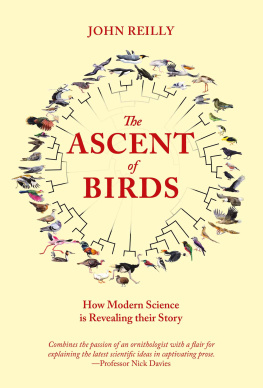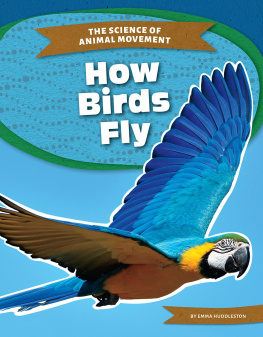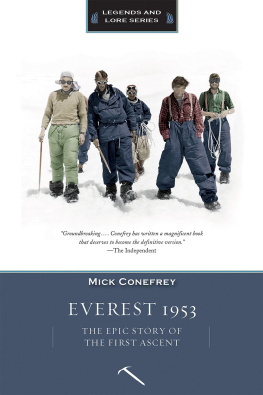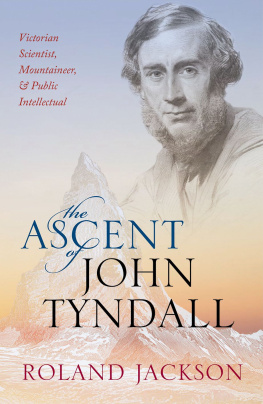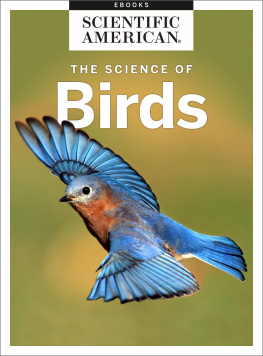Landmarks
Published by Pelagic Publishing
www.pelagicpublishing.com
PO Box 725, Exeter EX1 9QU, UK
The Ascent of Birds: How Modern Science is Revealing their Story
ISBN 978-1-78427-169-5 (Hbk)
ISBN 978-1-78427-170-1 (ePub)
ISBN 978-1-78427-171-8 (PDF)
Copyright 2018 John Reilly
John Reilly asserts his moral right to be identified as the author of this work.
All rights reserved. No part of this document may be produced, stored in a retrieval system, or transmitted in any form or by any means, electronic, mechanical, photocopying, recording or otherwise without prior permission from the publisher. While every effort has been made in the preparation of this book to ensure the accuracy of the information presented, the information contained in this book is sold without warranty, either express or implied. Neither the author, nor Pelagic Publishing, its agents and distributors will be held liable for any damage or loss caused or alleged to be caused directly or indirectly by this book.
Every effort has been made to trace and contact all copyright holders before publication. If notified, the publisher will be pleased to rectify any errors or oversights at the earliest opportunity.
British Library Cataloguing in Publication Data
A catalogue record for this book is available from the British Library.
Also by John Reilly:
Greetings from Spitsbergen: Tourists at the Eternal Ice 18271914
Spitsbergens Early Postcards: an Annotated Catalogue
Cover image: paintings by Jon Fjelds, Natural History Museum of Denmark; phylogeny by Guojie Zhang, Avian Phylogenomics Consortium
To Jon Fjelds for the idea to start, and Nick Davies and Gareth Dyke for the encouragement to finish
The Creation is never over. It had a beginning but has no ending. Creation is always busy making new scenes, new things, and new Worlds.
Immanuel Kant (17241804)
The time will come I believe, though I shall not live to see it, when we shall have fairly true genealogical trees of each great kingdom of nature.
Charles Darwin (18091882)
You can know the name of that bird in all the languages of the world, but when youre finished, youll know absolutely nothing whatever about the bird. Youll only know about humans in different places and what they call the bird. So lets look at the bird and see what it is doing thats what counts.
Richard Feynman (19181988)
Contents
Acknowledgements
T he idea for this book was the result of the chance input of two individuals: Nik Borrow, who first raised the issue of picathartes speciation, and Jon Fjelds, who kindly provided the answer. In their different ways, both were responsible for kick-starting this three-year project and for that I am especially grateful.
I would also like to thank the many professional guides whose field skills enabled me to observe first-hand the leading characters of this book, and in so doing opened my eyes to the bewildering variation and complexity of the worlds avifauna. I am also indebted to those scientists who replied to my pestering emails, forwarded relevant papers, provided helpful suggestions, and allowed me to use their photographs and artwork. I have listed all of the above in alphabetical order: Peter Alfrey, Craig Benkman, Charles Bishop, Nik Borrow, Leslie Christidis, Stefan Christmann, Julia Clarke, Joel Cracraft, Willie de Vries, Jared Diamond, Jon Fjelds, Ewan Fordyce, Nicole Fuller, Robert Furness, Peter Garrity, Chris Gaskin, Peter and Rosemary Grant, Lucy Hawkes, Jason Horn, Des Hume, Walter Jetz, Daniel Ksepka, Tim Laman, Markus Lilje, Kevin McCracken, Andrew Meade, John Megahan, Jin Meng, Steve Mills, Ian Montgomery, Pete Morris, Rolf Nussbaumer, Jnos Olh, Nuno Oliveira, Mark Pagel, Tony Parker, Eduardo Patrial, Lars Petersson, Richard Prum, Petra Rank, Forrest Rowland, Edwin Scholes, Graham Scott, Victor Soria-Carrasco, Chubzang Tangbi, Shaun Templeton, Gavin Thomas, Daniel Thomas, Andreas Trepte, Mark van Beirs, Katrina van Grouw, Dylan van Winkel, Chris Venditti and Christopher C. Witt. I am especially indebted, however, to Gerald Mayr, who kindly checked the manuscript for errors relating to palaeontology, and whose encyclopaedic knowledge and attention to detail has saved me many a blush.
Acknowledgement of all those who helped, of course, does not imply their endorsement of the views expressed in this book; I alone am answerable for them. Similarly, any errors of fact or omissions are entirely my responsibility.
Thanks must also go to Nick Davies and Gareth Dyke for their confidence in the project, and to Frank Ryan for his gentle editorial guidance. I would like to thank my son Mark for his patience in producing the many drafts of the figures. I am indebted to the skills of copy-editor Hugh Brazier, whose eagle eyes have spotted more grammatical and factual errors than I would care to admit. I am also grateful to Nigel Massen and his team at Pelagic Publishing, all of whom have helped transform my words and pictures into the book you now hold in your hands.
Last of all, but by no means least, I would like to thank Janette, my wife and birding companion, who convinced me that the writing of this book was not beyond me, and who provided the support needed during the times of self-doubt.
Illustrations
FIGURES
PLATES
Timeline
| Years before present | Major events |
| 4.5 billion | Formation of Earth |
| 3.8 billion | Emergence of life on Earth |
| 23166 million | Age of dinosaurs |
| 150 million | Archaeopteryx |
| 9070 million | Ratites evolve into separate lineages |
| 90 million | Shorebirds |
| 8040 million | New Zealand wrens (Acanthisittidae) |
| 72.8 million | Oilbird |
| 71.4 million | Suboscineoscine divergence |
| 66.5 miilion | Vegavis iaai |
| 66 million | KPg mass extinction event |
| 64.2 million | Suboscine divergence into New World and Old World lineages |
| 62 million | Oldest penguin fossil (Waimanu manneringi) |
| 60 millon | Emergence of owls |
| 58.553.8 million | Storm petrels |
| 58.0 million | Diversification of crown lineage of parrots |
| 55.6 million | Diversification of pittas and broadbills |
| 52.5 million | Sapayoa splits from broadbills |
| 52.3 million | Albatrosses (Diomedeidae) |
| 50.6 million | Pan-Apodiformes fossil Eosypselus rowei |
| 48 million | Hummingbirds split from their sister group, the swifts and treeswifts |
| 47 million | Picathartes; rockjumpers; Rail-babbler |
| 45 million | Core corvoids and transitory oscines emerged from the proto-Papuan archipelago |

